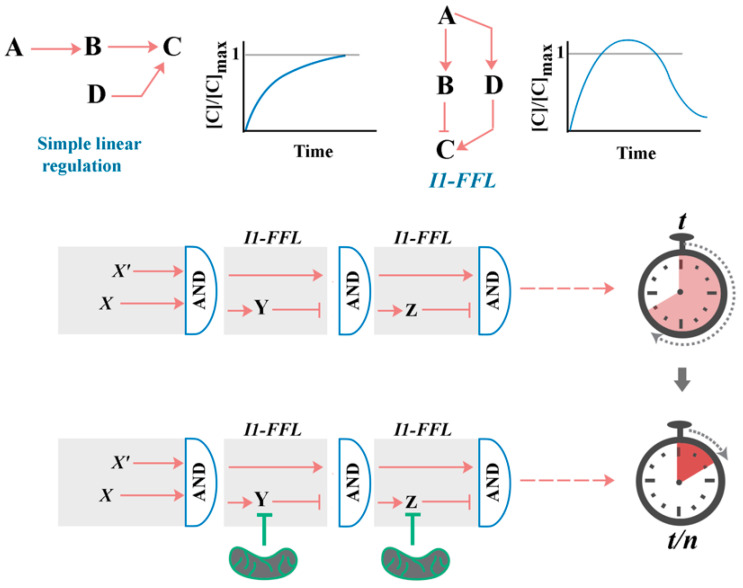Figure 1.
Network motifs utilised in the cellular clock. In an I1-FFL (right), competing inputs from an activator (D) and an inhibitor (B) elicited downstream to a common activator (A) generate a pulsed signalling output (C) as opposed to a linear flow of information (C). Multiple programmable I1-FFLs can be linked via AND gates to control the pace of complex biological phenomena (X, X’, Y, Z represent signalling mediators). Inhibition of the inhibitory arm of I1-FFLs by various cues (e.g., mitochondrial ROS) accelerates the signalling outcome proportional to the number on I1-FFLs linked together in series.

